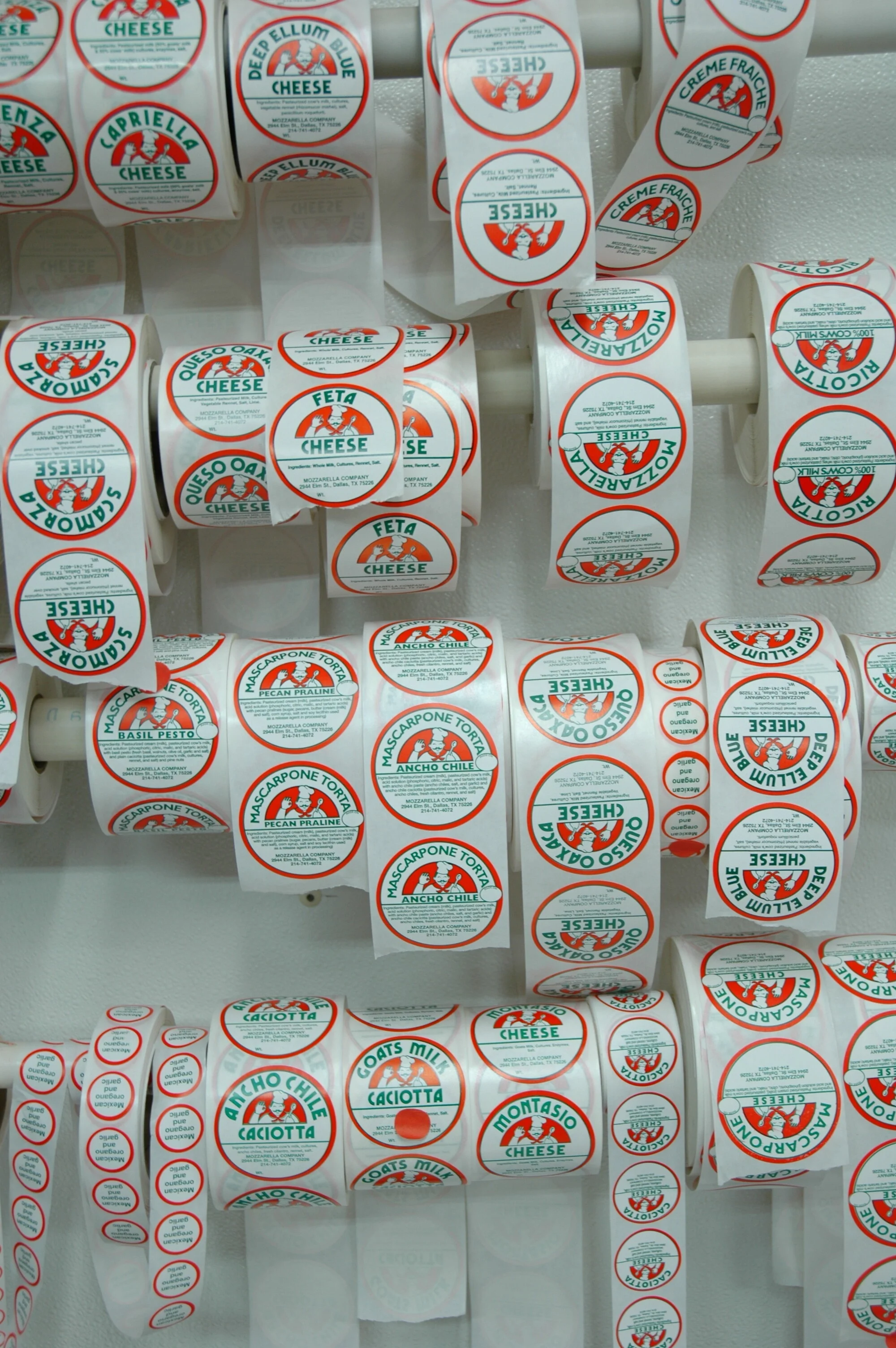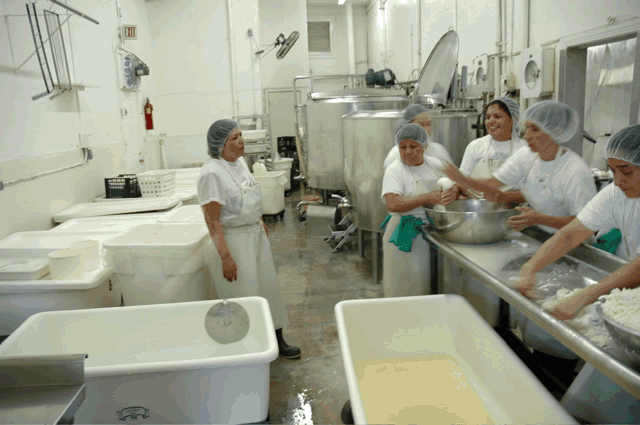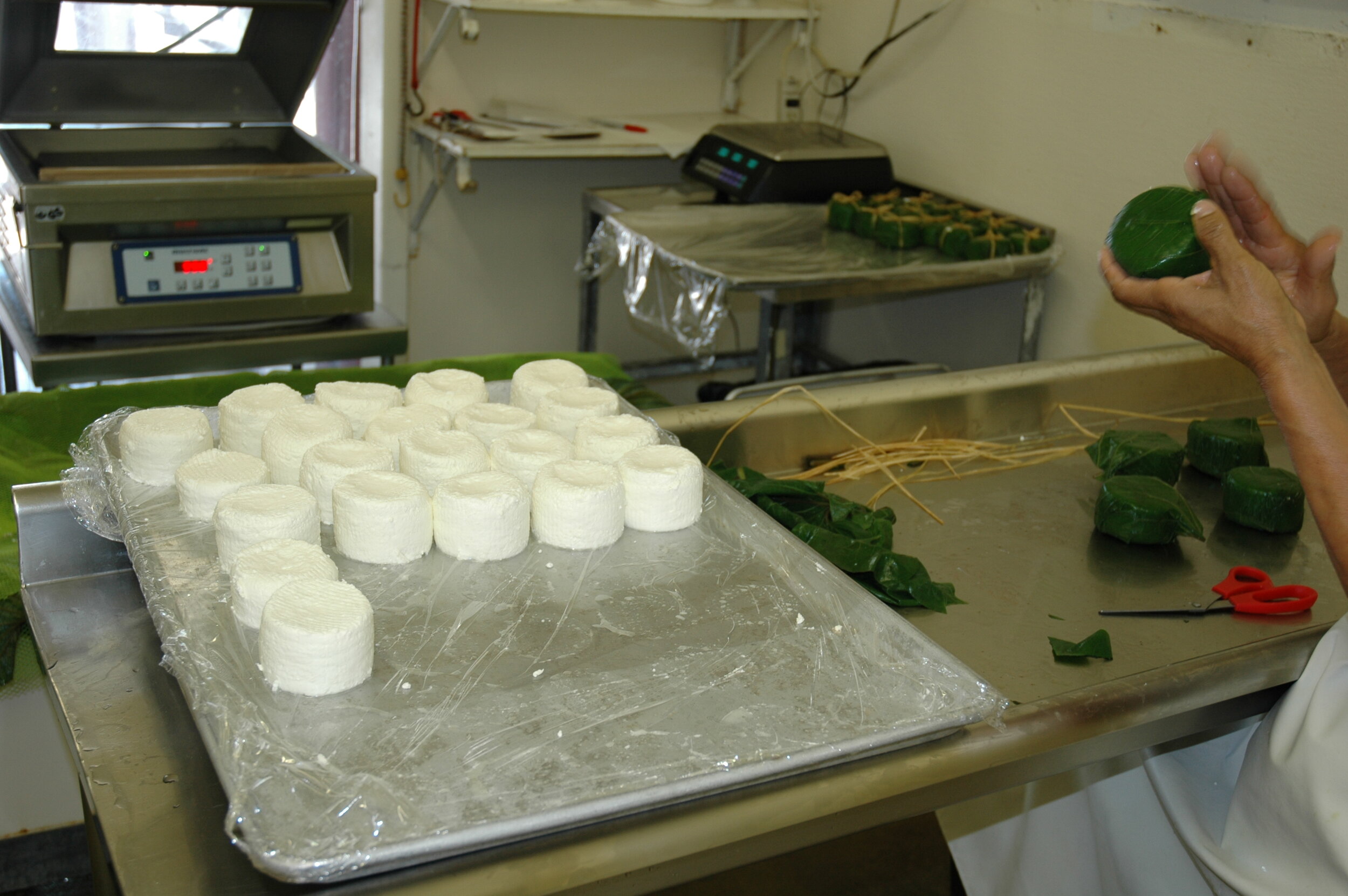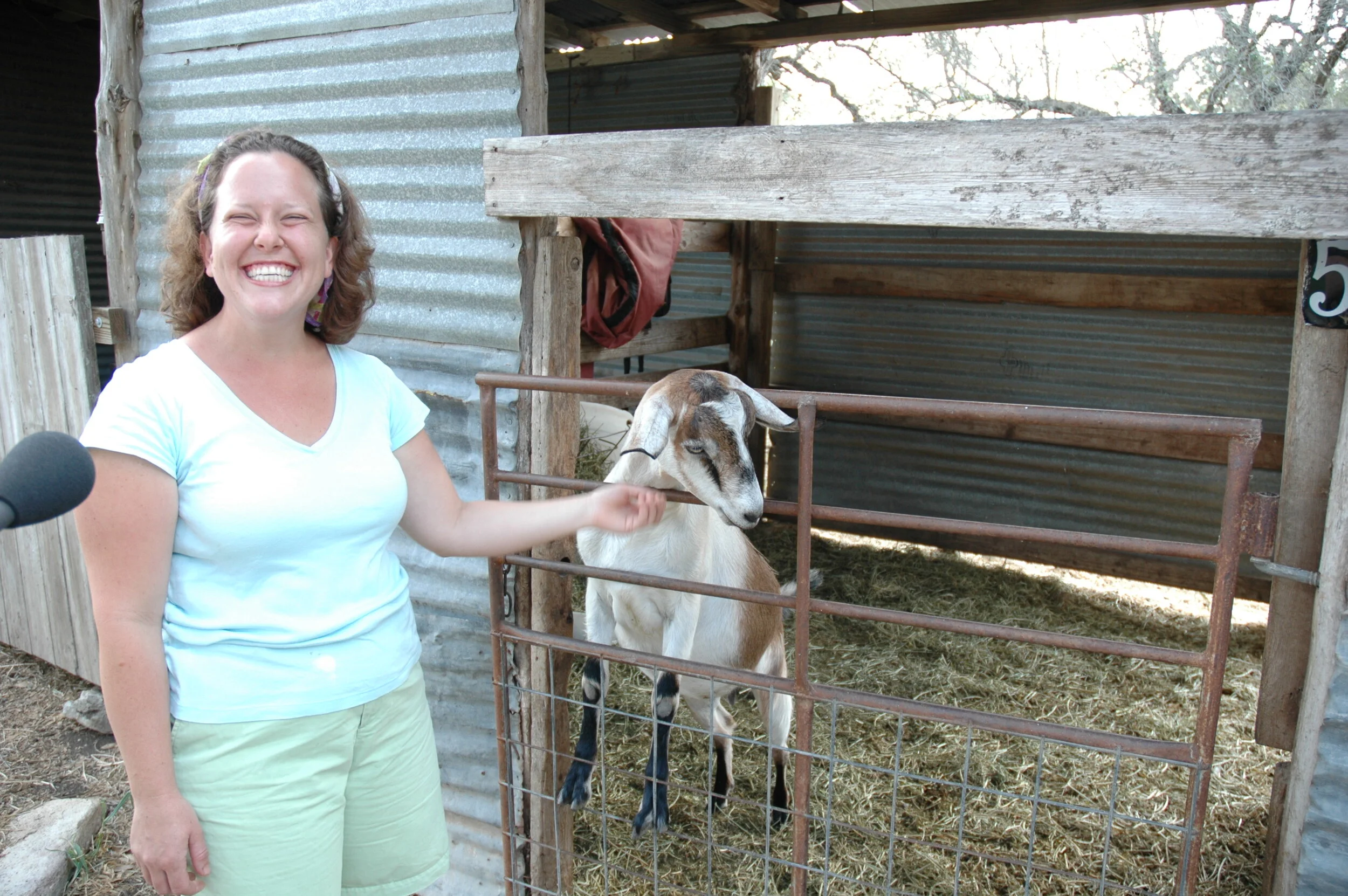Mozzarella Company: Texas
June 2006
Name: Mozzarella Company
Owner: Paula Lambert
Location: Dallas, Texas
Animals: Mozzarella Company gets both their cow and goat milk from a number of small dairies around the Dallas area.
Cheeses/Products: MOZZARELLA(goat and cow), Queso Oaxaca, Ricotta (goat and cow), Feta (goat and cow), Queso Fresco (traditional and flavored), Queso Blanco, Creme Fraiche, Mozzarella Roll, Hoja Santa, Caciotta (traditional and flavored, cow and goat), Mascarpone, Mascarpone Tortas, Smoked Scamorza, Crescenza, Blanca Bianca, Montasio, Montasio Festivo, Herbed Goat Logs, Fresh Texas Goat Cheese (traditional and flavored), Deep Ellum Blue, Mascarpone
I called Paula from the road when we were nearing Dallas and asked her if she was still at the photoshoot she had been part of over the last few days (she is one of the busiest people I know)...she assured me that she was doing nothing at that moment except waiting for Michael and me to arrive and tell her all about our travels. So when we arrived we gave Paula and her husband Jim a bit of an update over dinner, at a restaurant called Ciudad, which included some fantastic upscale tex-mex food (her cheese was indeed on the menu).
In the morning we sipped cappuccinos before making the 7-minute drive to the Mozzarella Company. Almost 25 years ago Paula decided that she could not live without the fresh mozzarella she had known during her time in Italy and that she was the ideal person to bring that delectable cheese to Dallas. She figured out the zoning requirements for a small factory and came across a spot in the Deep Ellum neighborhood in Dallas. As we drove she explained that the neighborhood earned a reputation during the 1920s when a group of blues musicians began creating new kinds of music that eventually became known as the Deep Ellem Blues.
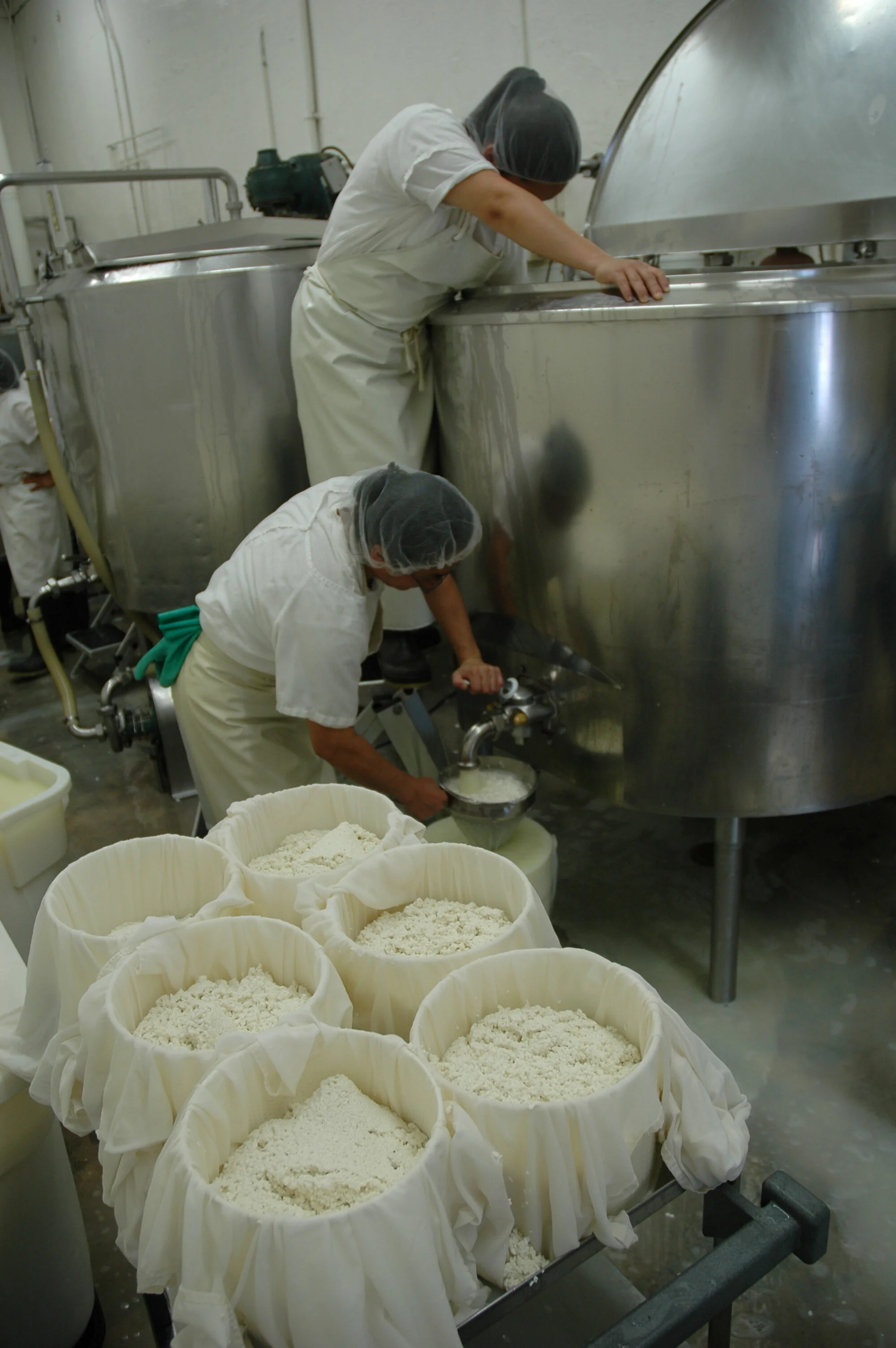
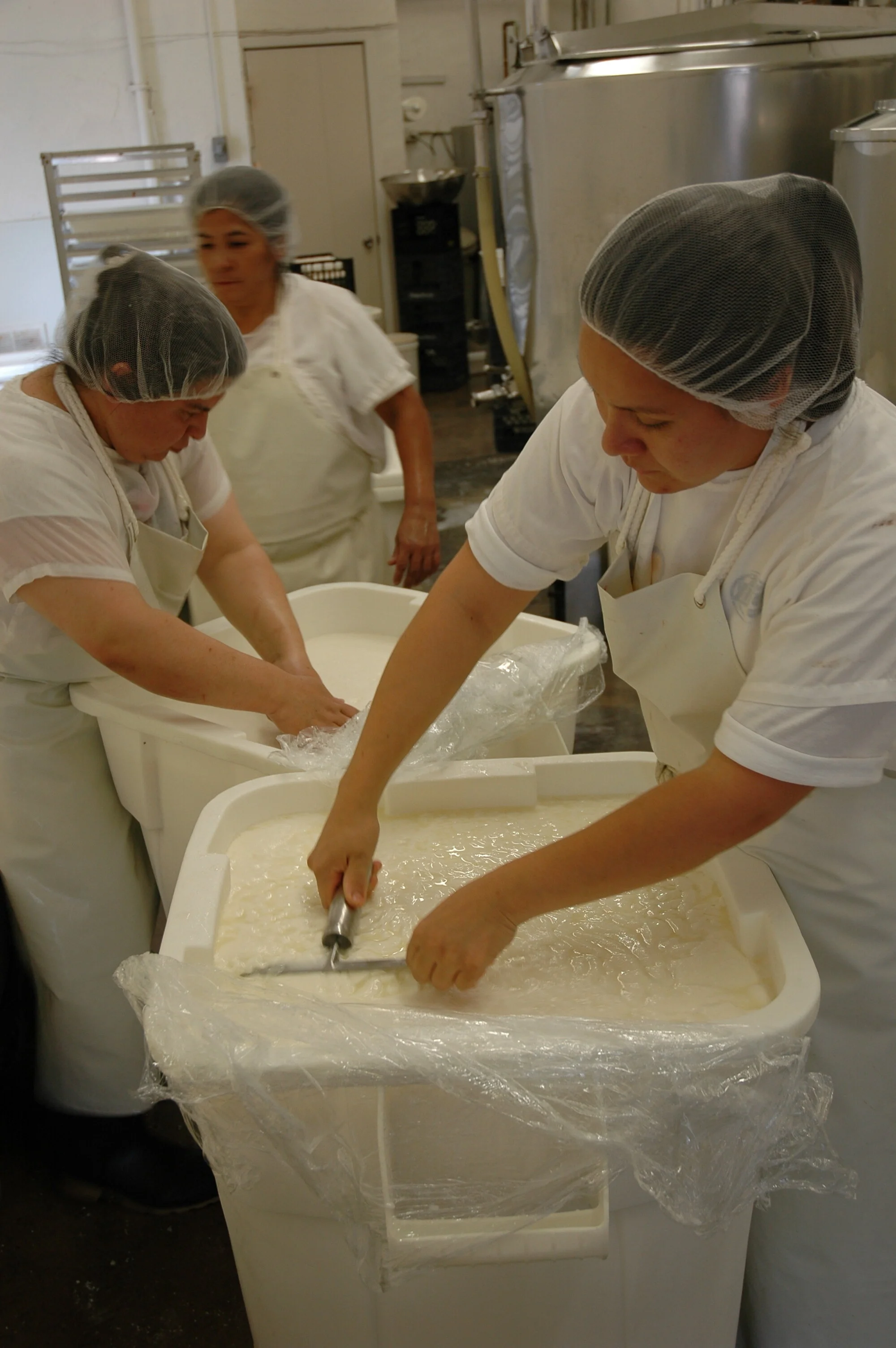

We spent the day with her two head cheesemakers, Carmen and Octavia, who have been with the company for 19 and 21 years respectively, and their crew in the cheese room. The crew is made up entirely of women who were so generous with their time and kind enough to not laugh too hard at our attempt to form balls of mozzarella. Within the seven hours, we spent at the cheese factory the women made eight varieties of cheese- all with attention and care. AS you can imagine this means there is some hustle happening and also that they arrived at the factory well before we did to begin pasteurization of the two vats of milk (one cow and one goat). The pasteurizers were emptied and re-filled multiple times that day in order to produce the cheese needed for upcoming orders. Carmen arrived early that morning (before 5 AM) to get things started and then passed the baton to Octavia that afternoon who continued with cheesemaking until 7:30 PM.
There are two large pasteurizers that double as vats. The trick to making so many styles of cheese in one day is the overall schedule for production and having the right kind of equipment and layout as the Mozzarella Company does. There are at least 10 large rectangular plastic tubs that sit on frames with wheels attached- this means that the room can be reconfigured at a moment’s notice. After the milk is pasteurized it is poured into these tubs which are basically smaller vats to allow for staggered cheesemaking of a variety of cheeses. For example, when we were there two or three of the vats were used to make mozzarella; the whey from each of these vats was poured off into another movable container, wheeled to the back of the plant and transferred into a small vat that is used to make ricotta and queso fresco. Meanwhile, a few other small vats were filled with goat or cow milk for making caciotta. Having multiple vats of caciotta allows them to make some traditional (plain) and other small quantities of ancho chile and other herbed varieties. The entire setup is simple, low-tech, and enables the women to make large quantities of cheeses all by hand.
When the mozzarella curd was ready, it was chopped up into strips and then smaller bits with a knife and submerged in hot water. One person worked the curd with a long paddle, gently stretching it and folding it in on itself. Once it was sufficiently stretched, the other women stopped what they were doing and gathered around one end of the table to begin pulling off pieces of the flexible curd and forming them into various shapes for bocconcini, half a pound, and one pound balls. Such a beautiful thing to watch and it was only one of the cheeses we saw them make.
I returned the following morning because the ladies were making one of my favorite Mozzarella Company cheeses,
Hoja Santa. They were just beginning to blanch the leaves when I arrived. Hoja Santa leaves are HUGE. Each leaf is pulled out of the boiling water and put into an ice bath before being stretched out on a plastic mat. Small rounds of goat cheese that were made the week prior were pulled from the cold storage to be wrapped. I always assumed that each piece of cheese was wrapped in one entire leaf and watching Octavia I saw that each piece of cheese was wrapped with about one third to one half of a leaf and that wrapping each one was like completing a puzzle. It looked so complicated that I opted out of leaf wrapping and instead followed Octavia’s wrapping with the string of rafia that winds around each piece and is finished with a small bow.
That evening we went to dinner with Paula, her husband, and two of her friends. We went to Hector’s Restaurant which was excellent. The chef started our meal off with a cheese platter for the table and declared that Paula is the "Grand Dame of all things cheese." We could not agree more. She is a savvy business woman (which the cheese world needs) who is turning out a robust line of cheeses that are truly made by hand. We never thought we’d say this but we kind of can’t wait to get back to Dallas, Texas....

